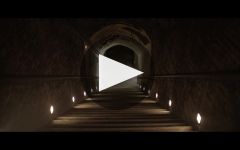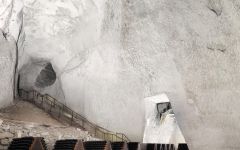Ruinart Brut Blanc de Blancs (Second Skin Gift Wrapped Bottle)
-
Wine
Spectator -
Wine &
Spirits -
James
Suckling -
Wine
Enthusiast




Product Details
Your Rating
Somm Note
Winemaker Notes
Ruinart introduces "Second Skin"
A sustainable luxury innovation from the first house of Champagne, made entirely from recyclable paper, preserves the quality of the wine, while reducing the carbon footprint by 60% vs the traditional gift box.
A supple, harmonious attack on the palate, firm but rounded. A voluptuous texture and vinosity that is not excessive, supported by excellent freshness. A very refreshing mineral finish.
At first very intense on the nose, giving way to fresh fruit notes, particularly ripe citrus and exotic fruits (pineapple). A highly refined floral second nose with notes of linden and white fruits (white peach).
Beautiful pale yellow colour with glints of gold and green, a vibrant, luminous color. Active effervescence with a fine, persistent release of bubbles.
Food Pairings
Ruinart Blanc de Blancs is a perfect champagne for all occasions: aperitifs, lunch, dinner or celebratory meals. The vivacity of Ruinart Blanc de Blancs is a perfect complement to seafood and white fish, pairing perfectly with dishes such as sea scallop carpaccio and sea bream tartare.
Professional Ratings
-
Wine Spectator
A toasty blanc de blanc with an aromatic overtone of smoke and lemon peel notes accenting flavors of poached apricot, brioche, passion fruit coulis and fresh thyme. Fine and creamy in texture, with a racy finish. Best from 2022 through 2027.
-
Wine & Spirits
The chalk savor of Côte des Blancs chardonnay bristles through this wine’s flavors of hazelnut and cream. The grape sources range from the Montagne de Reims and Vesle Valley south to the Coteaux Sézannais, the fruit coming together in a luscious Champagne, delicious with any roast fish in a cream sauce.
-
James Suckling
A vibrant and refreshing Champagne with a bright, enticing nose of lemon (fresh and candied) and sliced pear, as well as some floral and passion-fruit notes. Lovely balance of juicy fruit and acidity that dances nimbly across the palate. A biscuit note from lees lies in the background. Delicate, silky and finish. A blend of wines from Côtes des Blanc, Montagne de Reims and Sézanne. Drink or hold.
-
Wine Enthusiast
With its 100% Chardonnay, this Champagne is finely textured, elegant with minerality and the freshest crispest apple flavors. It does have some weight and certainly has intensity—a satisfying, textured wine that is ready to drink.






Ruinart Blanc de Blancs is the emblem of the House, and it is the perfect expression of the Ruinart taste. It is comprised of 100% Chardonnay grapes grown primarily with Premiers Crus from the Côte de Blancs and Montagne de Reims terroirs, both prized for their aromatic finesse.

A term typically reserved for Champagne and Sparkling Wines, non-vintage or simply “NV” on a label indicates a blend of finished wines from different vintages (years of harvest). To make non-vintage Champagne, typically the current year’s harvest (in other words, the current vintage) forms the base of the blend. Finished wines from previous years, called “vins de reserve” are blended in at approximately 10-50% of the total volume in order to achieve the flavor, complexity, body and acidity for the desired house style. A tiny proportion of Champagnes are made from a single vintage.
There are also some very large production still wines that may not claim one particular vintage. This would be at the discretion of the winemaker’s goals for character of the final wine.

Associated with luxury, celebration, and romance, the region, Champagne, is home to the world’s most prized sparkling wine. In order to bear the label, ‘Champagne’, a sparkling wine must originate from this northeastern region of France—called Champagne—and adhere to strict quality standards. Made up of the three towns Reims, Épernay, and Aÿ, it was here that the traditional method of sparkling wine production was both invented and perfected, birthing a winemaking technique as well as a flavor profile that is now emulated worldwide.
Well-drained, limestone and chalky soil defines much of the region, which lend a mineral component to its wines. Champagne’s cold, continental climate promotes ample acidity in its grapes but weather differences from year to year can create significant variation between vintages. While vintage Champagnes are produced in exceptional years, non-vintage cuvées are produced annually from a blend of several years in order to produce Champagnes that maintain a consistent house style.
With nearly negligible exceptions, . These can be blended together or bottled as individual varietal Champagnes, depending on the final style of wine desired. Chardonnay, the only white variety, contributes freshness, elegance, lively acidity and notes of citrus, orchard fruit and white flowers. Pinot Noir and its relative Pinot Meunier, provide the backbone to many blends, adding structure, body and supple red fruit flavors. Wines with a large proportion of Pinot Meunier will be ready to drink earlier, while Pinot Noir contributes to longevity. Whether it is white or rosé, most Champagne is made from a blend of red and white grapes—and uniquely, rosé is often produce by blending together red and white wine. A Champagne made exclusively from Chardonnay will be labeled as ‘blanc de blancs,’ while ones comprised of only red grapes are called ‘blanc de noirs.’
